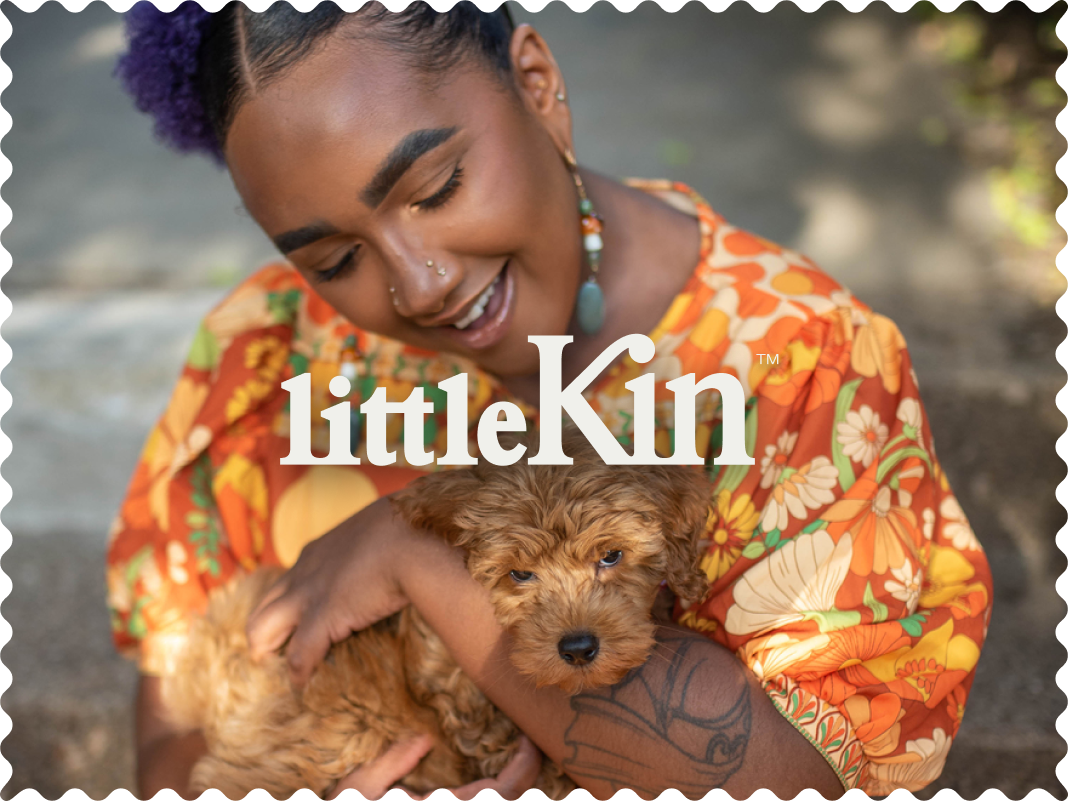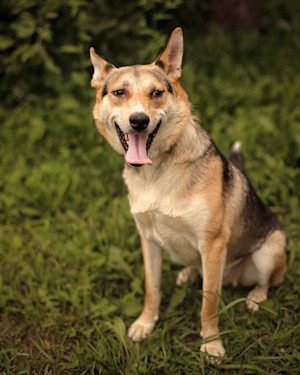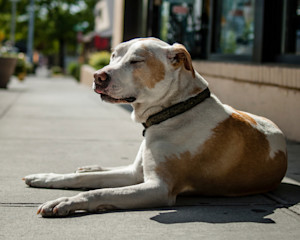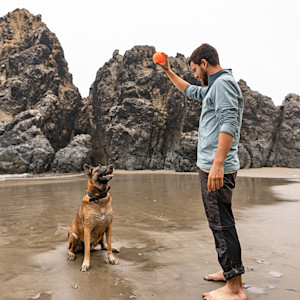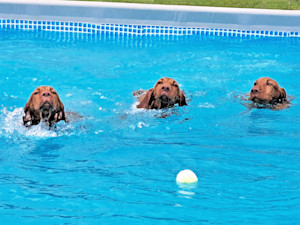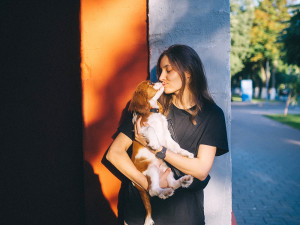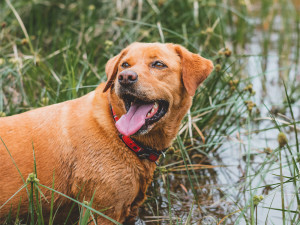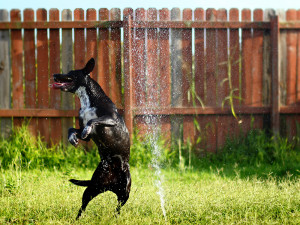How to Tell If Your Dog Is Sunburnt
A furry coat is not an SPF
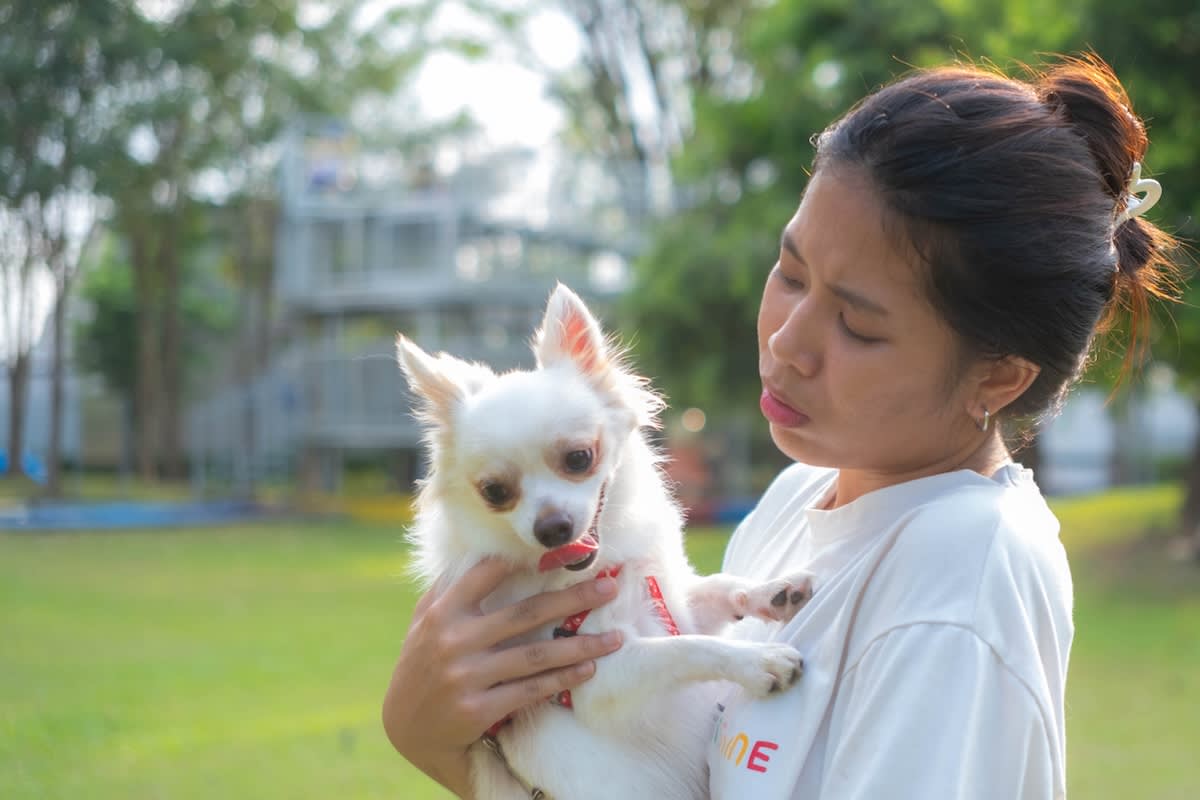
Share Article
There’s nothing more enjoyable than sitting out in the garden on a summer’s day, after you’ve got your shades on and topped up your factor 50 to stay safe in the sun, of course!
But what about our canine companions? Are they at risk of getting sunburnt, or does their fur keep them safe enough? It’s a common misconception that our furry friends are safe from the sun because in fact they can, just like us, get sunburn. And, with the UK weather being its wonderfully unpredictable self – along with an increase in the number of heatwaves and sunny spells thanks to climate change – this means our dogs are more at risk. Let’s have a look at how to spot the first signs your dog has caught the sun, along with how to treat them. The more we know about who’s at risk and the signs to look out for the better we are prepared to keep them safe.
Signs your dog is sunburnt
Sunburn, or solar dermatitisopens in new tab, is skin damage via the UV rays of the sun. When we think of a sunburn, we picture red inflamed skin after a day spent outside. This is exactly what happens when our pets get sunburnt too. One type of ray, UVB rays, actually penetrates skin cells and directly affects the DNA. They are absorbed by the DNA which can cause mutations, initiate repair responses and even cause cell death. This causes an increase of blood flow to the area along with pain response signals to help prevent further damage. These effects can cause redness to the skin, pain, blisters and peeling. These signals warn of the danger to help you realise – much like with any burn – that you should move away from the stimulus.
What with all their fur and a seeming inability to stand still, all these skin reactions are a lot harder to spot on our dogs, but that doesn’t mean that they’re not susceptible! Look out for patches where the fur naturally parts to see to the skin, if it is sunburnt it will look pinker or red. One early warning sign that we’ve let them overindulge in the sun is that the area to the sides and on top of their noseopens in new tab can become pinker, drier and even start to lose some fur. You may also notice your pup licking their nose more than usual as they try to relieve the dry skin and irritation.
Just like in humans, red and sunburnt dog skin can be quite tender and painful when touched, so be very gentle with any areas of inflamed skin when examining. Once damaged by sun the skin can start to peel or flake away, causing further tenderness with the new layer of skin. This discomfort can change the behaviour of your dog and make them seem out of sorts, lethargic or leave them showing a reluctance to be touched or stroked. If it is very painful your normally gentle dog may feel the need to protect themselves, so keep a careful eye out for any signs of aggression as this may indicate there is pain somewhere in their body.
Which dogs are most at risk
Unpigmented skin is at higher risk of sunburn, but any skin can be damaged by sun exposure. As their fur covers the majority of their body dogs naturally have some protection, but exposed areas such as the nose, belly and inside of their ears all have less hair coverage and are at greater risk of sunburn. Some breeds of dogs have naturally less fur, such as the Chinese Crested Dog or the American Hairless Terrier, and so sun exposure can have more of an impact. Some endocrine disorders such as Cushings and conditions such as seasonal alopecia can cause fur loss which also exposes areas of skin to the sun which leaves dogs more predisposed to sunburn.
Not only does sun damage risk a tender sunburn, but it can also increase the chances of skin cancer, in us and our pups too. The cell damage that occurs from UVB rays can cause mutations in cells, these mutations and rapid turnover of damaged and dead skin cells can lead to uncontrolled growth. Common skin cancers in dogs are squamous cell carcinomasopens in new tab and cutaneous haemangiosarcomas, which has been linked to overexposure to the sun.
Immediate care steps
At the first sign of sunburn on your dog, it is important to act quickly to prevent further damage. The first step is to reduce the sun exposure: take your pup into the shade and somewhere cool out of the sun. The next step is to reduce the temperature in the area with a cool compress or cool water. Remember back to when you’ve had sunburns yourself and how tender they can be. Try to be very gentle when examining and treating the area of your dog’s damaged skin.
As long as your pet seems well in themselves with no obvious signs of pain and the sunburn is only mildly pink to red with no blisters or peeling you can continue to treat at home. One over-the-counter treatment that can help soothe the skin is aloe vera gel. Make sure it is alcohol free and your dog does not ingest it as it can cause mild gastrointestinal issues, so use topically only and not around the face or where they can lick. Try keeping the aloe vera gel in the fridge to add to its cooling and soothing benefits (this works well for humans too!).
If your dog is not acting like themselves, you see any peeling or blistering skin or they seem reluctant to be touched or painful please call your vet as pain relief and further treatment is needed. They may need anti-inflammatory pain relief such as Non Steroidal Anti-Inflammatories (NSAID) like Meloxicam (Metacamopens in new tab, Loxicom etc). Please note that some human NSAIDs like ibuprofen are highly toxic to dogs so never give your dog pain relief without your vet’s say so.
Prevention tips
There are so many sun protection options on the shelves for us, but before you reach for the sunscreen for your dog, it’s important to double check it is safe for them. There are some ingredients in sunscreen that are fine for us humans but can be toxic or irritating to dogs.
In particular, ingredients such as acetylsalicylic acidopens in new tab and zinc oxide can cause toxicity or gastrointestinal issues in dogs. So make sure you have a dog-safe suncream to keep them safe and sunburn free. There are several you can purchase yourself as Dermoscent SunFREEopens in new tab or Aniwell FiltaBacopens in new tab and FiltaClearopens in new tab, but if you’re not sure what you have is safe for your pet, double check with your vet.
The main way to stop your pet from suffering from sunburn is prevention. Only walk your dog when it’s cool and in summer only go out when it’s not direct sunlight; either in the very early or late hours of the day. This will not only help prevent sunburn but also heat-stroke.
When keeping your dog occupied at home opt for shaded or indoor activities when the sun is at its highest. Try ways to increase your mental stimulation instead of physical in order to wear them out. Try things such as hiding their favourite treats (treats within their diet regimen!) around the house or shaded parts of the garden for a great game of Hide and Treat. Another great option is to create a snuffle mat or try to teach them a new trick. All these activities can tire out your pooch almost as much as a walk.
Don’t be alarmed if your dog prefers to have a little siesta in the early afternoon instead of their usual high energy activities during the summer, they are showing they know how to keep themselves safe and not to overexert themselves. But don’t be fooled, some dogs like to sunbathe, this doesn’t mean it is good for them. Protecting them against irreversible and painful sun damage is worth ruining their potential tan!
References
Coyner, Kimberly S. “Diagnosis and Treatment of Solar Dermatitis in Dogs.opens in new tab” DVM 360, Aug. 2007.
Nikula, Kristen J., et al. “Ultraviolet Radiation, Solar Dermatosis, and Cutaneous Neoplasia in Beagle Dogsopens in new tab.” Radiation Research, vol. 129, no. 1, Radiation Research Society, Jan. 1992, pp. 11–11.
Pet Poison Helpline. “Sunscreen Toxinsopens in new tab.” Pet Poison Helpline, 15 June 2023.
Werner, Alexander. “Top 5 Sun-Induced Skin Lesions in Dogsopens in new tab.” Cliniciansbrief.com, 28 Feb. 2023.

Dr Josephine Corrick, BVMSci, BSc, MRCVS
Dr Josephine Corrick, BVMSci, BSc, MRCVS is a veterinary surgeon based in the south of Scotland where she has been since graduating from the University of Surrey. She enjoys working in general practice treating small animals. Her particular interests include diagnostic imaging and the treatment of wildlife.
Having found a passion for veterinary medicine after doing a degree in Equine Sports Science she still enjoys including horses in her life by spending time with her highland ponies. Alongside her clinical work, she helps run a smallholding caring for rare breed sheep and exploring the Scottish countryside with her young Cocker Spaniel.
Related articles
![]()
How to Keep Your Dog Cool This Summer
Expert advice on preventing heat-stroke and keeping your pup comfortable during warm weather
![man with a ball and a dog on the beach]()
Salty Paws & Sandy Noses: The Best Dog-Friendly Beaches in the UK
Find your pup’s perfect patch of sand
![Three dogs in a swimming pool]()
The Best Dog Swimming Pools In the UK For Budding Water Pups
Get ready for some serious doggy paddle
![Woman holding a beagle in warm dappled summer light]()
You’ve Got a Summer-Lovin’ Pup. Here’s How to Keep Them Safe
Some like it hot (but not most dogs). Here are the season’s health hazards, from fleas to grass seeds
![dog playing in a pond]()
Water Hemlock: Dangerous Plants for Dogs
Pet parents watch out this summer for a common, but deadly plant
![Dog-friendly backyard, dog playing in the sprinkler]()
6 Ways to Make Your Back Garden a Canine Paradise
Paddling pools aren’t just for kids
